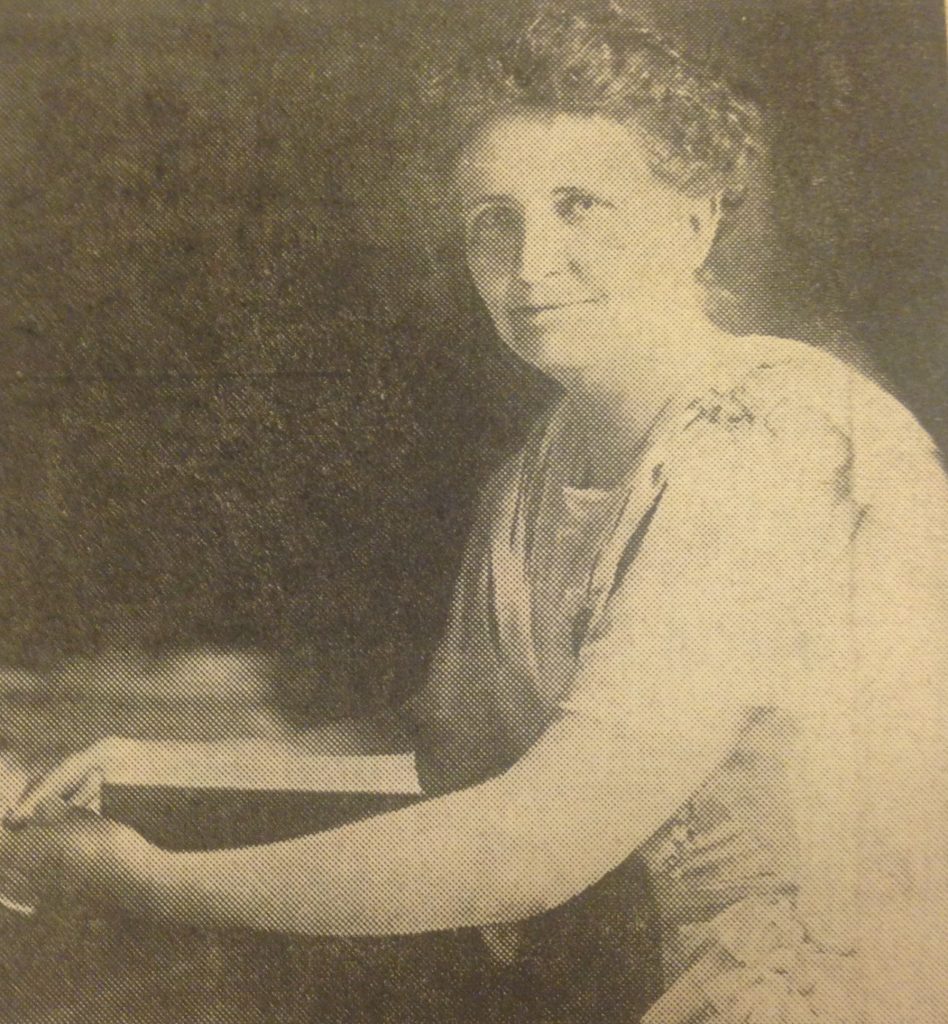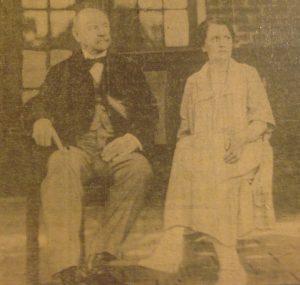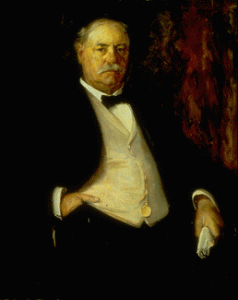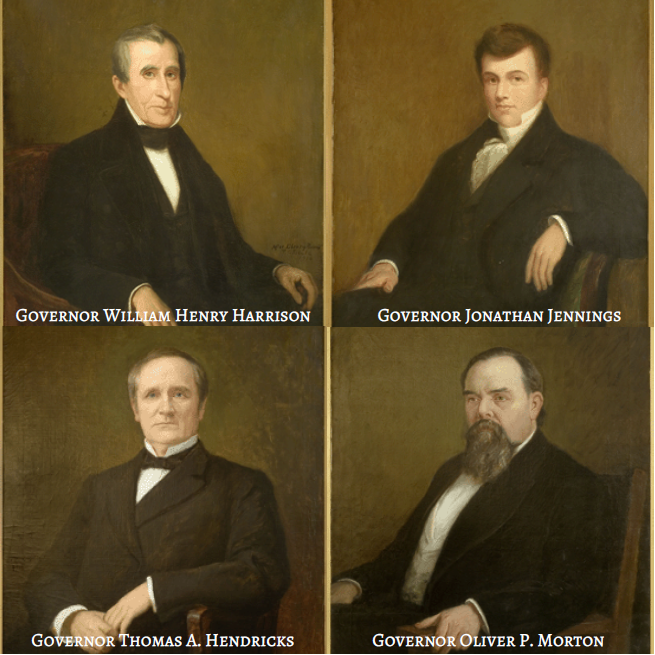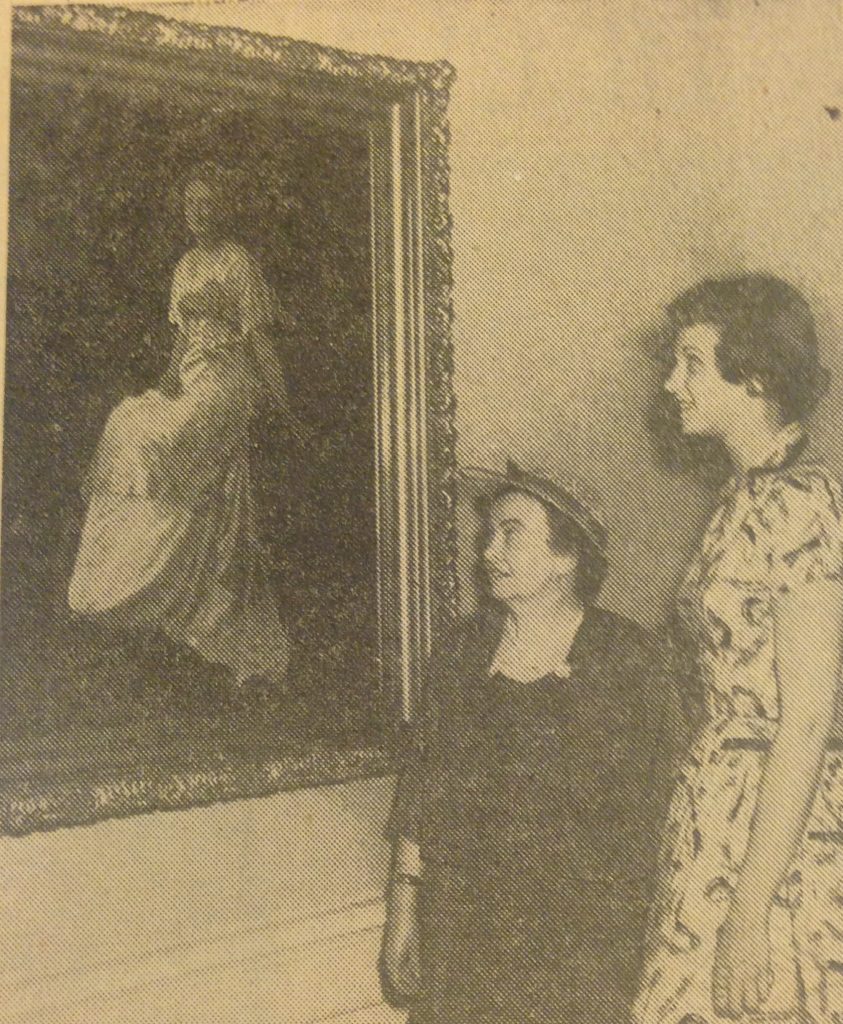
This week marks the Indiana Historical Bureau’s 105th anniversary! We’ll be celebrating with cake and history—the two go really well together. IHB’s founding can be traced back to the creation of the Indiana Historical Commission in 1915. The Indiana General Assembly created this commission for the purpose of “providing for the editing and publication of historical materials and for an historical and educational celebration of the Indiana centennial.”[1] The thinking was that as Hoosiers celebrated 100 years of statehood in 1916, an understanding of their state’s history would give them a sense of identity and community.
For the next decade, the commission led the centennial celebrations, gathered and published important historical documents, collected records from World War I, and worked with local and state historical societies as well as other state agencies. They also began marking historical locations around the state—something we’re still passionate about today! In March 1925, the General Assembly passed a new law reorganizing the Indiana Historical Commission into the Indiana Historical Bureau. We’ve been researching, publishing, surveying, writing, and telling stories about Indiana history ever since.
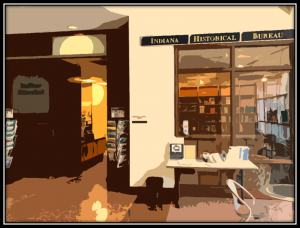
Of course, though, there have been many changes to and within IHB during its long history, particularly within the last five years. We have a young staff here without a lot of institutional memory, so we have recently begun digging into our own history. We hope this will help us better understand our current programming and the work we do here, as well as the relationships we’ve had with other historical organizations across the state. Just like the original organizers of the Historical Commission, we believe that it’s important to know where you’ve been in order to understand where you are. We hope that our research during our 105th anniversary year can illuminate more about our fruitful past to better prepare for our future.
But back to those more recent changes . . . In July 2018, IHB formally merged with the Indiana State Library (ISL), and we became one of three divisions of ISL (IHB, Public Services, and Statewide Services). We have long been tied to the library through various means, and in some ways, this merger was a return to the past (in a good way). When the Bureau was formed in 1925, IHB, ISL, and what was then called the Legislative Bureau (now Legislative Services Agency) were each divisions of a larger Indiana Library and Historical Department.[2]
Since the 1930s, IHB maintained offices in the Indiana State Library and Historical Building. However, this recent merger has really opened up doors for IHB in terms of access to resources and opportunities for new partnerships. In February 2019, ISL underwent an internal reorganization when the Rare Books and Manuscripts Department and Digital Initiatives Department joined with IHB’s public historians to comprise a new IHB division. We now have stewardship of documents important to Indiana history and provide free access to resources like digital newspapers, while our public historians make the history accessible through outreach.
So who are we as we celebrate our 105th year, and what exactly is it that we do? Formally, IHB is a division of ISL made up of three smaller departments: Public History, Rare Books and Manuscripts, and Digital Initiatives. Informally, we describe ourselves as a public history research institute. As such, we continue to abide by our mission statement adopted in 1996 that says,
The Indiana Historical Bureau provides publications, programs, and other opportunities for Indiana citizens of all ages to learn and teach about the history of their communities, the state of Indiana, and their relationships to the nation and the world.
We deep-dive into primary source research and then utilize that research in our public projects and programs. We have re-imagined our work to include practicing 21st century history and have shifted away from publishing print materials, instead largely adopting digital media.
We’re still excited about markers! We’re proud to diversify and expand our marker program both by topic and geography. We’ve drastically increased our marker content to include more women’s history and African American history topics, and we are determined to fix our problematic markers related to indigenous history.
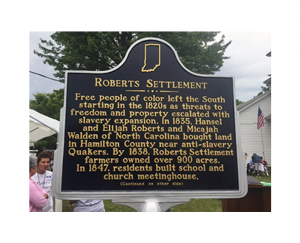
In addition, IHB offers new initiatives such as the blog, Talking Hoosier History podcast, the Indiana Legislative Oral History Initiative, and the Hoosier Women at Work biennial history conference, among other programs. We partner with other organizations such as the Indiana Historical Society to operate the County Historians Program and the United States Holocaust Memorial Museum on their History Unfolded project. We also host a newspaper digitization project, Hoosier State Chronicles, and a collaborative collections portal, Indiana Memory. In short, we keep busy and do our best to provide Hoosiers with fascinating and inclusive stories from our shared past, as well as provide resources and services to help you dig into the history yourself.
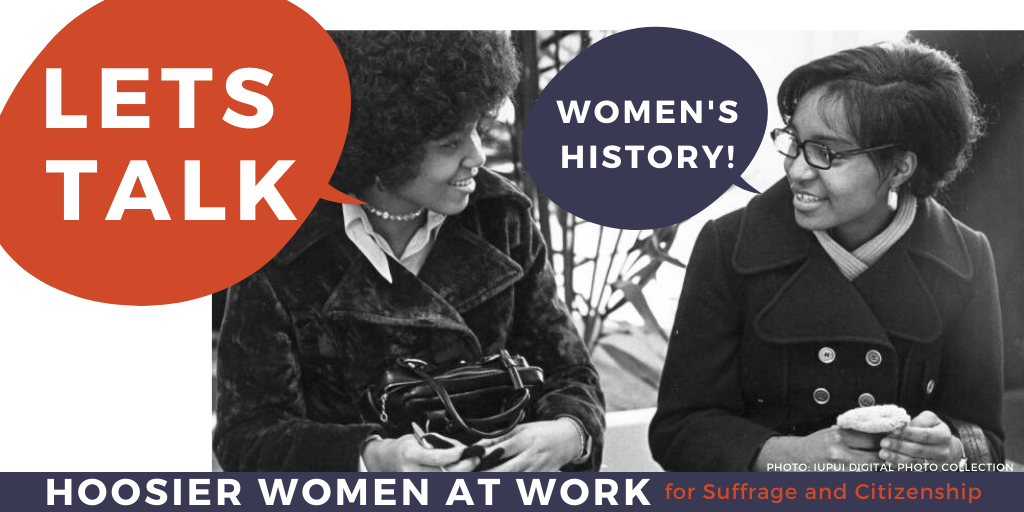
At the heart of all the projects, programs, and collaborations is our belief in and commitment to the History Relevance campaign. The campaign, which has been in action for approximately seven years, “encourages the public to use historical thinking skills to actively engage with and address contemporary issues and to value history for its relevance to modern life.” We want Hoosiers to first and foremost understand what history is, how to practice it, and develop the critical skills it offers. Secondly, we want Hoosiers to recognize its importance and relevance to the world in which we live. History is NOT merely a series of names, dates, and facts to be memorized. It is an interpretation of the past based on primary source materials and facts. It is a narrative based on evidence and sources that helps us understand what came before, and why and how that informs where we are right now. To emphasize a quote from Sam Wineburg,
History teaches us a way to make choices, to balance opinions, to tell stories, and to become uneasy—when necessary—about the stories we tell.[3]
Furthermore, as the campaign asserts, history is essential for the future. Indeed,
historical knowledge is crucial to protecting democracy. By preserving authentic and meaningful documents, artifacts, images, stories, and places, future generations have a foundation on which to build and know what it means to be a member of this civic community.[4]
As we celebrate our 105th anniversary, we want to ensure that we continue to help Hoosiers learn more about Indiana’s past and the ways in which it is relevant to the present. This also means that IHB will continue exploring our own history to stay relevant and continue serving Hoosiers in the best way possible. We hope that you will help us do this and embrace the new and exciting things the Bureau has to offer in 2020! Stay tuned for more, and here’s to another 105 years . . . Now cake!
[1] Laws of the State of Indiana, 1915, (Indianapolis: Wm. B. Burford, 1915), 455.
[2] Laws of the State of Indiana, 1925, (Indianapolis: Wm. B. Burford, 1925), 191.
[3] Sam Wineburg, Historical Thinking and Other Unnatural Acts: Charting the Future of Teaching the Past, (Philadelphia: Temple University Press, 2001), ix.
[4] Value of History Statement, History Relevance Campaign, https://www.historyrelevance.com/value-history-statement, Accessed 4 March 2020.

